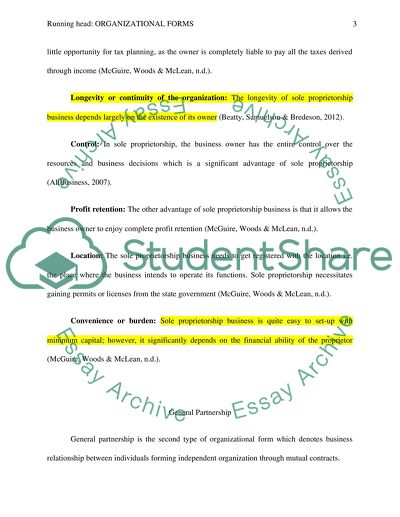
These tasks, which once required significant manual effort and time, can now be completed quicker and more accurately by automation, freeing up employees to focus on higher value tasks and more strategic activities. Traditionally, financial processes, such as data entry, data collection, data verification, consolidation, and reporting, have depended heavily on manual effort. All of these manual activities tend to make the finance function costly, time-consuming, and slow to adapt. At the same time, many financial processes are consistent and well defined, making them ideal targets for automation with AI. Trained machine learning models process both current and historical transactional data to detect money laundering or other bad acts by matching patterns of transactions and behaviors. GenAI can fill out the needed forms with data provided by the finance team for the staff to review and confirm.

Additionally, Entera can discover market trends, match properties with an investor’s home and complete transactions. Socure created ID+ Platform, an identity verification system that uses machine learning and AI to analyze an applicant’s online, offline and social data, which helps clients meet strict KYC conditions. The system runs predictive data science on information such as email addresses, phone numbers, IP addresses and proxies to investigate whether an applicant’s information is being used legitimately. Socure is used by institutions like Capital One, Chime and Wells Fargo, according to its website. Learn how to transform your essential finance processes with trusted data, AI insights and automation. By establishing oversight and clear rules regarding its application, AI can continue to evolve as a trusted, powerful tool in the financial industry.
Centrally led, business unit executed
- Learn how AI can help improve finance strategy, uplift productivity and accelerate business outcomes.
- Scienaptic AI provides several financial-based services, including a credit underwriting platform that gives banks and credit institutions more transparency while cutting losses.
- AI has given the world of banking and finance new ways to meet the customer demands of smarter, safer and more convenient ways to access, spend, save and invest money.
- AI can even help make pricing personalized, using real-time insights about individual customer preferences, market changes, and competitor activity to optimize price and discounts.
Second, automated financial close processes enable companies to shift employee activity from manual collection, consolidation, and reporting of data to analysis, strategy, and action. Using our own solutions, Oracle closes its introduction to inventories and the classified income statement books faster than anyone in the S&P 500—just 10 days or roughly half of the time taken by our competitors. This leaves our financial team with more time focused on the future instead of just reporting the past. AI refers to the development of computer systems that can perform tasks like humans do.
What is machine learning (ML)?
Workiva offers a cloud platform designed to simplify workflows for managing and reporting on data across finance, risk and ESG teams. It’s equipped with generative AI to enhance productivity by aiding users in drafting documents, revising content and conducting research. The company has more than a dozen offices around the globe serving customers in industries like banking, insurance and higher education. The advent of ERP systems allowed companies to centralize and standardize their financial functions. Early automation was rule-based, meaning as a transaction occurred or input was entered, it could be subject to a series of rules for handling.
Is the ERP vendor’s solution also focused on human improvement? Or is it only focused on process improvement?
This simplifies the customer interaction with banks, reduces overall processing time, and reduces human errors in the process. AI in finance can help reduce errors, particularly in areas where humans are prone to mistakes. High volume repetitive tasks can often lead to human error—but computers don’t have the same issue. Leveraging the advanced algorithms, data analytics, and automation capabilities provided by AI can help identify and correct errors common in areas such as data entry, financial reporting, bookkeeping, and invoice processing. However, that’s merely the start of where finance could implement AI to drive efficiency and productivity.
Companies that take their time incorporating AI also run the risk of becoming less attractive to the next generation of finance professionals. 83% of millennials and 79% of Generation Z respondents said they would trust a robot over their organization's finance team. Millennial employees are nearly four times more likely than Baby Boomers to want to work for a company using AI to manage finance. Business leaders are excited about generative AI (gen AI) and its potential to increase the efficiency and effectiveness of corporate functions such as finance.
With the increasing complexity of regulatory compliance around the globe, the cost and resource burden of regulatory reporting has soared in recent years. Organizations devote significant time and resources to meeting those requirements. AI can take on a portion of the workload by automating compliance monitoring, audit trail management, and regulatory report creation. Among the financial institutions we federal extension studied, four organizational archetypes have emerged, each with its own potential benefits and challenges (exhibit). The right operating model for a financial-services company’s gen AI push should both enable scaling and align with the firm’s organizational structure and culture; there is no one-size-fits-all answer. An effectively designed operating model, which can change as the institution matures, is a necessary foundation for scaling gen AI effectively.
Second, train staff so they have the skills to effectively interact with AI tools, building analytical capabilities that capitalize on the technology. Giving finance staff increased understanding of AI will also be critical in ensuring the proper security, controls, and appropriate use of the technology. Task automation is an obvious cost reduction tactic, letting companies decrease how to flush alcohol from your system their labor costs, fill workforce gaps, improve productivity and efficiency, and have employees focus on strategic, value-adding activities.
